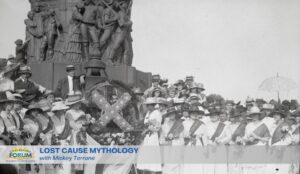Until 1962, this two and one-half-year conflict between the United States and Great Britain was a forgotten, often derided historical event. But between 1962 and 2012, War of 1812 scholarship has grown to include new approaches to a venerable, though neglected, topic.
The War of 1812 constituted an existential crisis for our young nation. Considering the odds against the U.S., it was less a matter of winning outright than of surviving and outlasting a larger, more experienced enemy. This is a rare opportunity to look closely at a period of our history that some might say was pivotal to the building of the American nation.
This will be an illustrated lecture focusing primarily on recent interpretations of the War of 1812. This was a conflict between two unequal enemies, with the United States playing “David” to Great Britain’s “Goliath.” We will explore why the United States, not Britain, declared war in the first place, and follow its shifting fortunes during the two and one-half years of warfare from 1812 to 1815.
As you will see, underlying the naval battles were the difficulties of supporting the war, its administration, finance, supply, recruitment, transport, medical support, and shipbuilding as well as its operations. Since many earlier accounts have depended on the “sea battles and commanders” approach to naval warfare without delving deeply into other elements that make for success or failure in naval warfare, Bill’s approach is to look at the reverse of the coin.
The new aspects of the war that Bill will bring to light are those to which traditional treatments have given less attention:
1) Lack of preparedness for war despite having to fight the most professional army and navy on the planet.
2) The U.S. had to innovate as quickly as possible to create new bases, new weapons, to improvise where necessary, and to find new sources of income to make up for what New England withheld. This included the need to
- Develop a larger class of ships with greater gun power.
- Build new naval bases on the Inland Lakes where none had previously existed.
- Replace older officers with new leadership of a younger generation.
- Implement new weapons systems.
What to Expect:
As with any good drama, this story begins with the excitement of first battles in 1812, reaches a low point in 1813, followed by a period of suspense, and ends with an uplifting conclusion in 1814-15. The results of this nearly forgotten war became a keystone in the building of the American nation.
Course Links:



